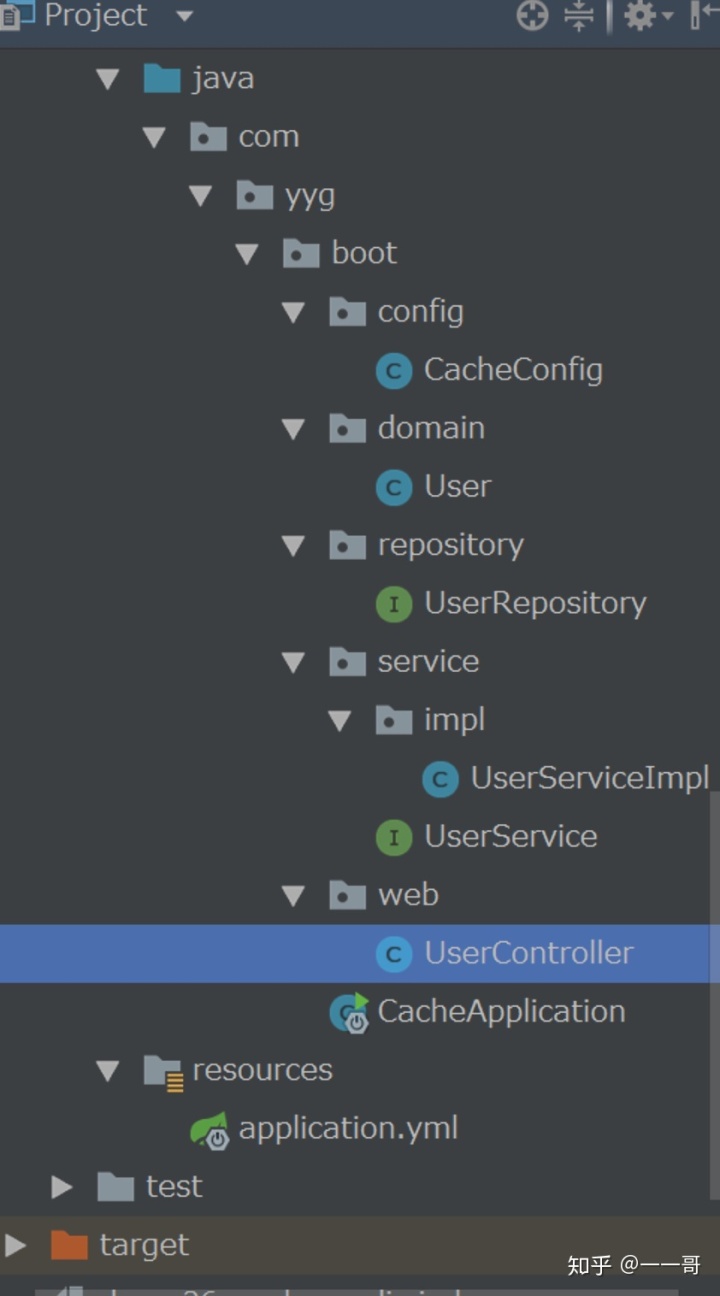SpringBoot2.x系列教程58--SpringBoot中整合Redis实现持久化缓存
作者:一一哥
在上一章节中,我们利用默认的ConcurrentHashMap来实现了一种默认的内存级别的缓存方案。但是该方案并没有进行持久化缓存,一旦内存被释放,缓存也就不存在了,所以本章节中,我带大家利用之前学过的Redis,来实现把缓存数据持久化到Redis中。
本案例中,我直接在上一节的案例上进行改造。
一. Spring Boot整合Redis实现缓存
1. 创建web项目
我们按照之前的经验,创建一个web程序,并将之改造成Spring Boot项目,具体过程略。
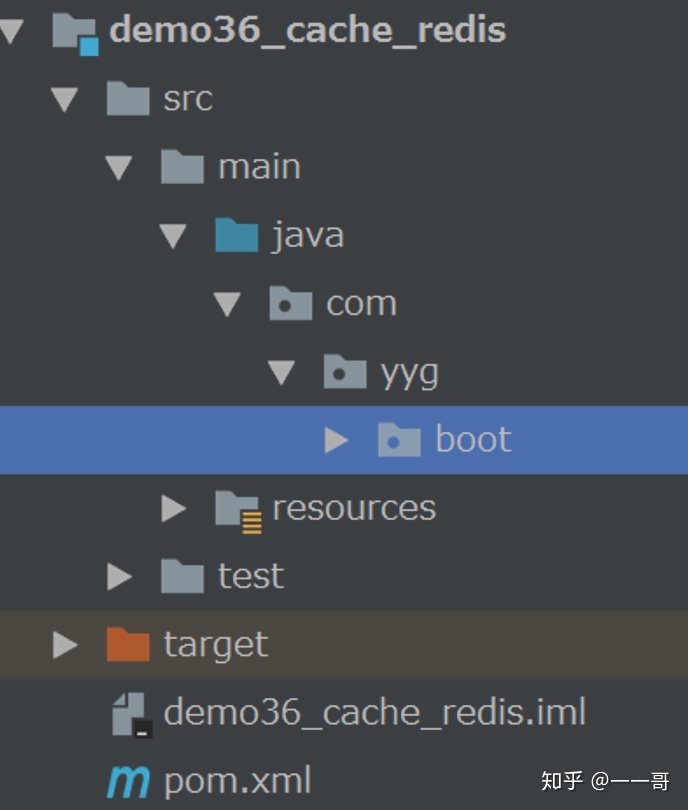
2. 添加依赖包
我们在上一章节的基础上,添加2个新的依赖包,redis和json的。
<dependency>
<groupId>org.springframework.boot</groupId>
<artifactId>spring-boot-starter-data-jpa</artifactId>
</dependency>
<!-- 改造:添加sql相关的依赖-->
<dependency>
<groupId>mysql</groupId>
<artifactId>mysql-connector-java</artifactId>
</dependency>
<dependency>
<groupId>org.springframework.boot</groupId>
<artifactId>spring-boot-starter-cache</artifactId>
</dependency>
<dependency>
<groupId>org.springframework.boot</groupId>
<artifactId>spring-boot-starter-data-redis</artifactId>
</dependency>
<dependency>
<groupId>com.alibaba</groupId>
<artifactId>fastjson</artifactId>
<version>1.2.39</version>
</dependency>3. 修改application.yml配置文件
主要是添加关于redis的配置信息,以及设置缓存类型。
cache:
default-exp: 1000 #单位秒,缓存的过期时间
server:
port: 8080
spring:
application:
name: cache-demo
datasource:
driver-class-name: com.mysql.cj.jdbc.Driver
username: root
password: syc
url: jdbc:mysql://localhost:3306/spring-security?useUnicode=true&characterEncoding=utf8&characterSetResults=utf8&useSSL=false&serverTimezone=UTC
redis:
host: localhost
port: 6379
database: 0
#password:
cache:
type: redis #由redis进行缓存,一共有10种缓存方案
jpa:
database: mysql
show-sql: true #开发阶段,打印要执行的sql语句.
hibernate:
ddl-auto: update4. 修改缓存管理器等配置类
package com.yyg.boot.config;
import com.alibaba.fastjson.JSON;
import com.fasterxml.jackson.annotation.JsonAutoDetect;
import com.fasterxml.jackson.annotation.PropertyAccessor;
import com.fasterxml.jackson.databind.ObjectMapper;
import org.springframework.beans.factory.annotation.Value;
import org.springframework.cache.CacheManager;
import org.springframework.cache.annotation.EnableCaching;
import org.springframework.cache.interceptor.KeyGenerator;
import org.springframework.context.annotation.Bean;
import org.springframework.context.annotation.Configuration;
import org.springframework.data.redis.cache.RedisCacheConfiguration;
import org.springframework.data.redis.cache.RedisCacheManager;
import org.springframework.data.redis.connection.RedisConnectionFactory;
import org.springframework.data.redis.core.RedisTemplate;
import org.springframework.data.redis.serializer.Jackson2JsonRedisSerializer;
import org.springframework.data.redis.serializer.RedisSerializationContext;
import org.springframework.data.redis.serializer.RedisSerializer;
import org.springframework.data.redis.serializer.StringRedisSerializer;
import java.lang.reflect.Method;
import java.time.Duration;
/**
* @Author 一一哥Sun
* @Date Created in 2020/4/14
* @Description Description
* EnableCaching启用缓存
*/
@Configuration
@EnableCaching
public class CacheConfig {
@Value("${cache.default-exp}")
private long exps;
@Value("${spring.redis.host}")
private String host;
@Value("${spring.redis.port}")
private int port;
//@Value("${spring.redis.timeout}")
//private int timeout;
//@Value("${spring.redis.password}")
//private String password;
@Bean
public KeyGenerator keyGenerator() {
return new KeyGenerator() {
@Override
public Object generate(Object target, Method method, Object... params) {
StringBuffer sb = new StringBuffer();
sb.append(target.getClass().getName());
sb.append(method.getName());
for (Object obj : params) {
sb.append(obj.toString());
}
return sb.toString();
}
};
}
/**
* RedisTemplate配置
*/
@Bean
public RedisTemplate<?, ?> redisTemplate(RedisConnectionFactory redisConnectionFactory) {
RedisTemplate<Object, Object> template = new RedisTemplate<>();
template.setConnectionFactory(redisConnectionFactory);
// 使用Jackson2JsonRedisSerializer来序列化和反序列化redis的value值
Jackson2JsonRedisSerializer<JSON> serializer = new Jackson2JsonRedisSerializer<JSON>(JSON.class);
ObjectMapper mapper = new ObjectMapper();
mapper.setVisibility(PropertyAccessor.ALL, JsonAutoDetect.Visibility.ANY);
mapper.enableDefaultTyping(ObjectMapper.DefaultTyping.NON_FINAL);
serializer.setObjectMapper(mapper);
template.setValueSerializer(serializer);
template.setHashValueSerializer(serializer);
// 使用StringRedisSerializer来序列化和反序列化redis的key值
template.setKeySerializer(new StringRedisSerializer());
template.afterPropertiesSet();
return template;
}
@Bean
public CacheManager cacheManager(RedisConnectionFactory redisConnectionFactory) {
// 生成一个默认配置,通过config对象即可对缓存进行自定义配置
RedisSerializer<String> redisSerializer = new StringRedisSerializer();
// 使用Jackson2JsnRedisSerializer来序列化和反序列化redis的value值
Jackson2JsonRedisSerializer<JSON> serializer = new Jackson2JsonRedisSerializer<>(JSON.class);
// 配置序列化
RedisCacheConfiguration config = RedisCacheConfiguration.defaultCacheConfig();
config.serializeKeysWith(RedisSerializationContext.SerializationPair.fromSerializer(redisSerializer));
config.serializeValuesWith(RedisSerializationContext.SerializationPair.fromSerializer(serializer));
// 设置缓存的默认过期时间
config.entryTtl(Duration.ofSeconds(exps));
// 不缓存空值
config.disableCachingNullValues();
return RedisCacheManager.builder(redisConnectionFactory).cacheDefaults(config).build();
}
}5. 创建实体类
package com.yyg.boot.domain;
import lombok.Data;
import lombok.ToString;
import javax.persistence.*;
import java.io.Serializable;
@Entity
@Table(name="user")
@Data
@ToString
public class User implements Serializable {
//IllegalArgumentException: DefaultSerializer requires a Serializable payload
// but received an object of type [com.syc.redis.domain.User]
@Id
@GeneratedValue(strategy = GenerationType.AUTO)
private Long id;
@Column
private String username;
@Column
private String password;
}6. 创建User仓库类
package com.yyg.boot.repository;
import com.yyg.boot.domain.User;
import org.springframework.data.jpa.repository.JpaRepository;
public interface UserRepository extends JpaRepository<User,Long> {
}7. 创建Service服务类
定义UserService接口
package com.yyg.boot.service;
import com.yyg.boot.domain.User;
public interface UserService {
User findById(Long id);
User save(User user);
void deleteById(Long id);
}实现UserServiceImpl类
package com.yyg.boot.service.impl;
import com.yyg.boot.domain.User;
import com.yyg.boot.repository.UserRepository;
import com.yyg.boot.service.UserService;
import org.springframework.beans.factory.annotation.Autowired;
import org.springframework.cache.annotation.CacheEvict;
import org.springframework.cache.annotation.CachePut;
import org.springframework.cache.annotation.Cacheable;
import org.springframework.stereotype.Service;
@Service
public class UserServiceImpl implements UserService {
@Autowired
private UserRepository userRepository;
//普通的缓存+数据库查询代码实现逻辑:
//User user=RedisUtil.get(key);
// if(user==null){
// user=userDao.findById(id);
// //redis的key="product_item_"+id
// RedisUtil.set(key,user);
// }
// return user;
/**
* 注解@Cacheable:查询的时候才使用该注解!
* 注意:在Cacheable注解中支持EL表达式
* redis缓存的key=user_1/2/3....
* redis的缓存雪崩,缓存穿透,缓存预热,缓存更新...
* condition = "#result ne null",条件表达式,当满足某个条件的时候才进行缓存
* unless = "#result eq null":当user对象为空的时候,不进行缓存
*/
@Cacheable(value = "user", key = "#id", unless = "#result eq null")
@Override
public User findById(Long id) {
return userRepository.findById(id).orElse(null);
}
/**
* 注解@CachePut:一般用在添加和修改方法中
* 既往数据库中添加一个新的对象,于此同时也往redis缓存中添加一个对应的缓存.
* 这样可以达到缓存预热的目的.
*/
@CachePut(value = "user", key = "#result.id", unless = "#result eq null")
@Override
public User save(User user) {
return userRepository.save(user);
}
/**
* CacheEvict:一般用在删除方法中
*/
@CacheEvict(value = "user", key = "#id")
@Override
public void deleteById(Long id) {
userRepository.deleteById(id);
}
}8. 创建Controller接口方法
package com.yyg.boot.web;
import com.yyg.boot.domain.User;
import com.yyg.boot.service.UserService;
import lombok.extern.slf4j.Slf4j;
import org.springframework.beans.factory.annotation.Autowired;
import org.springframework.http.HttpStatus;
import org.springframework.http.ResponseEntity;
import org.springframework.web.bind.annotation.*;
@RestController
@RequestMapping("/user")
@Slf4j
public class UserController {
@Autowired
private UserService userService;
@PostMapping
public User saveUser(@RequestBody User user) {
return userService.save(user);
}
@GetMapping("/{id}")
public ResponseEntity<User> getUserById(@PathVariable("id") Long id) {
User user = userService.findById(id);
log.warn("user="+user.hashCode());
HttpStatus status = user == null ? HttpStatus.NOT_FOUND : HttpStatus.OK;
return new ResponseEntity<>(user, status);
}
@DeleteMapping("/{id}")
public String removeUser(@PathVariable("id") Long id) {
userService.deleteById(id);
return "ok";
}
}9. 创建入口类
package com.yyg.boot;
import org.springframework.boot.SpringApplication;
import org.springframework.boot.autoconfigure.SpringBootApplication;
@SpringBootApplication
public class CacheApplication {
public static void main(String[] args) {
SpringApplication.run(CacheApplication.class, args);
}
}10. 完整项目结构
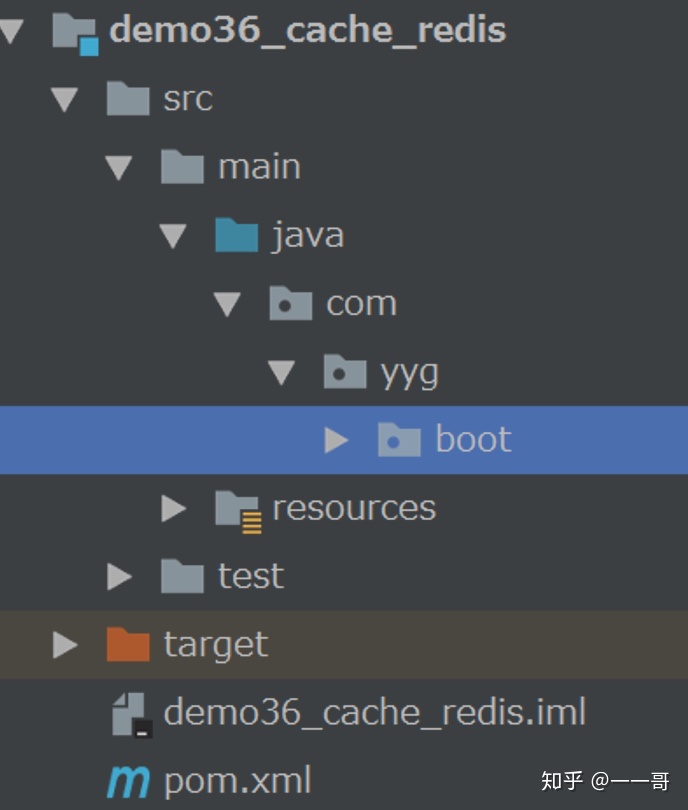
11. 重新项目进行测试
首先可以看到,我的redis中此时没有任何缓存数据。
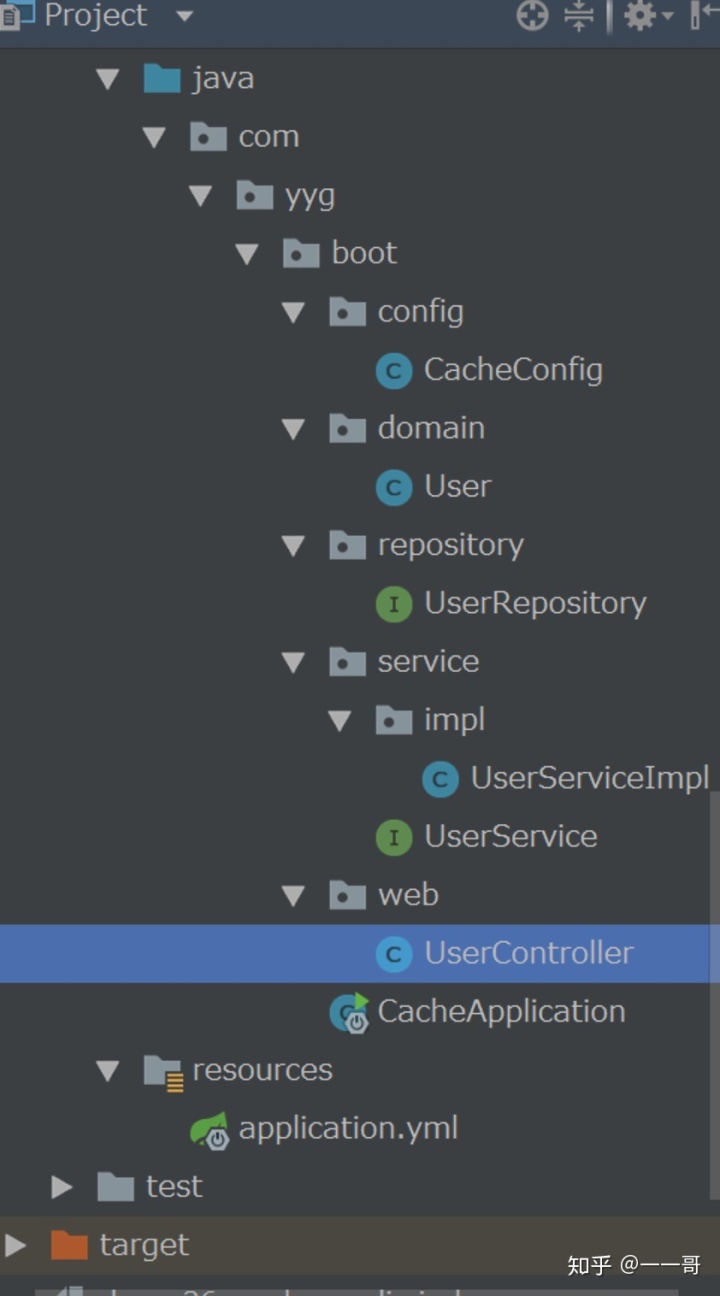
解析来我在postman中进行查询。

此时在Redis Desktop Manager中重新加载一下数据,可以看到已经有了缓存的redis数据了。
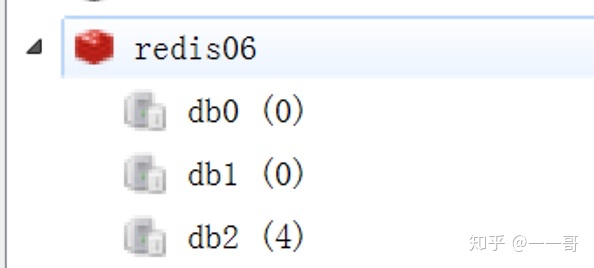
控制台中也可以看到User的hashCode依然相同,说明我们已经成功的整合了Redis,实现了把数据缓存到了Redis中,进而实现了持久化。
